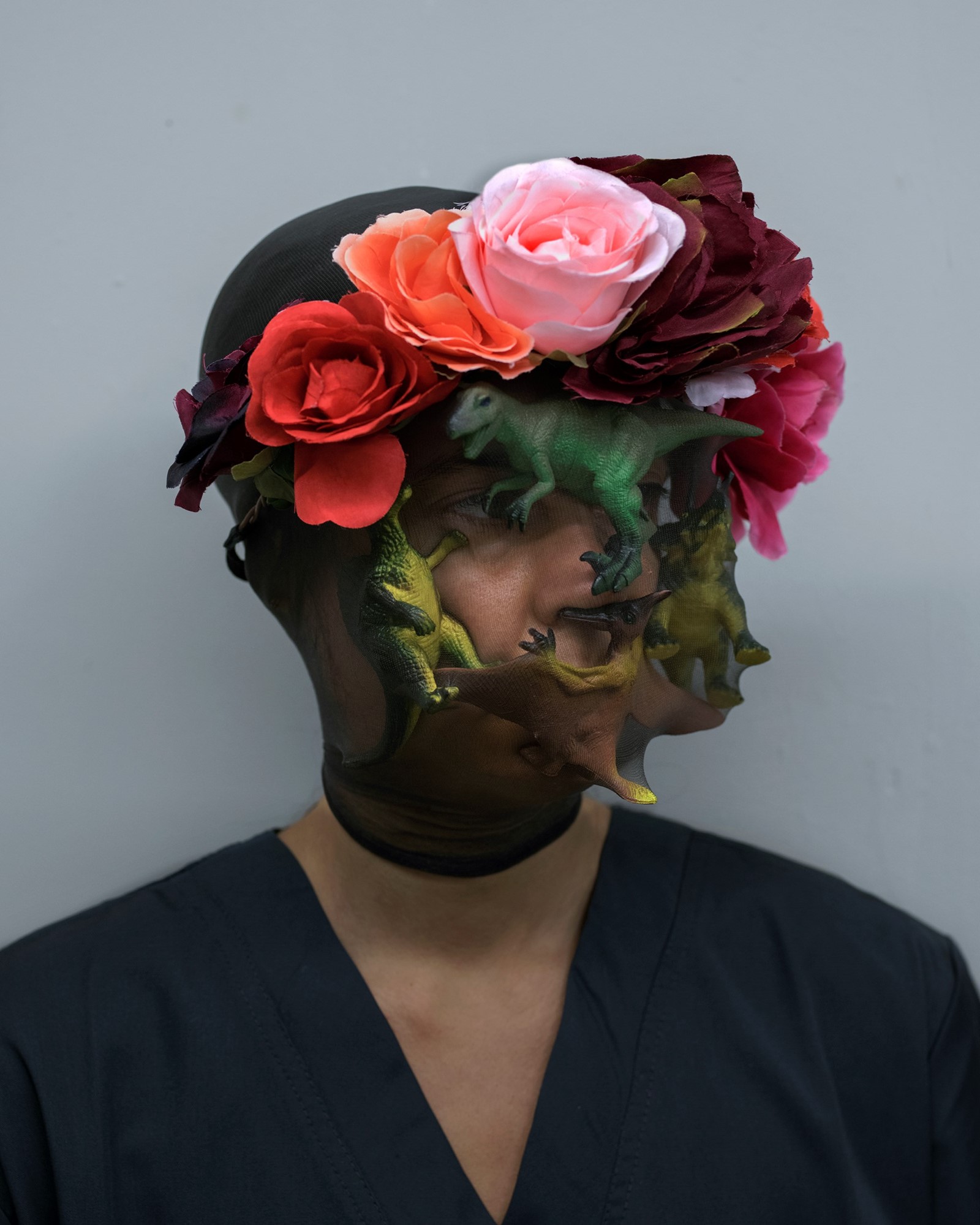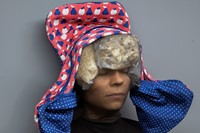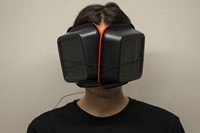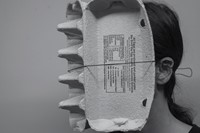Jackie Nickerson is a world-class photographer, known for her fashion work (she and Katie Shillingford captured the season’s best looks for the latest issue of AnOther Magazine), as well as her art work, which often has an intellectual quality to it, exploring the interesting and often entangled relationship between humans, the environment and manufactured materiality. Her last book, Field Test, published in 2020, did just that, exploring the trauma of modern living; how the things that are unseen change us, such as “globalisation, technology and medicine, commercialisation, mass production, environmental pollution, migration, digitisation, fake news and pandemics”.
Her latest publication, Salvage (Kerber), is a continuation of this exploration, looking as the name suggests, at our relationship with consumption; the things we place value on and the things we don’t; the sentimentality we ascribe to some objects and the disposability with which we treat others; and how, despite that, the materiality of these objects isn’t that different. So, we have a series of portraits – captured in Nickerson’s characteristically quiet and meditative way – featuring people with various things fixed to their faces; food containers, soft toys and flowers tied, like visors, to their heads, or else held there by what looks like tights.
When asked for her references, Nickerson doesn’t give the names of other photographers, but of artists – many of whom are affiliated with the Northern Renaissance. “Hans Memling, Hans Holbein, Roger Van de Weyden, Jan Van Eyck, Hans Memling, Lucas Cranach, Georges Braque, Picasso, Man Ray, Albrecht Dürer,” she says, before adding. “Durer’s work has a kind of photographic quality to it – the perspective is strange – almost as if he’s painting with a wide-angle lens.” And you can see the commonalities between their work, especially the Old Masters who similarly constructed their portraits with a fierce meticulism, but who also – and I’m thinking about their Vanitas works specifically here – explored ideas of waste and decay in their depictions of rotting food and wilting flowers. Like Nickerson’s Salvage photographs, their paintings possess a rigidity but at the same time a complexity, be that a psychological complexity – as Dr Brendan Rooney writes in the foreword, quoting David Hockney – or an intellectual one.
As with much of Nickerson’s work, Salvage balances her exploration of heady ideas with images that are striking and beautiful. Here, she delves into the themes of this book and the process of creating it.
“I used the title Salvage to reference the reused and recycled content. It is a series of photographs that look at the homogeneity of portraiture – balance, proportions, size – using a formula that is characteristic of that genre.
“In 2016, I had a show in the National Gallery of Ireland called Uniform that comprised of photographs selected from my series Terrain (2012–2013), and paintings from several schools and periods from the National Gallery’s permanent collection. It was curated to show modern photographs of farm workers beside traditional paintings with an idea to initiate a conversation about status and portraiture, and about the place that status has in our culture, society and art.
“Historically, portraiture in art has often been defined by displays of wealth – houses, expensive clothes and materials, horses – that often blind us, and prejudice us against who we see before us. I began to think about how content drives a narrative in portraiture, how adornments, emblems and assets are used to create an identity or communicate status. So I wanted to expand on that as a single series of photographs and explore the idea of making portraits using recycled and repurposed content – using materials that we may, or may not value today.
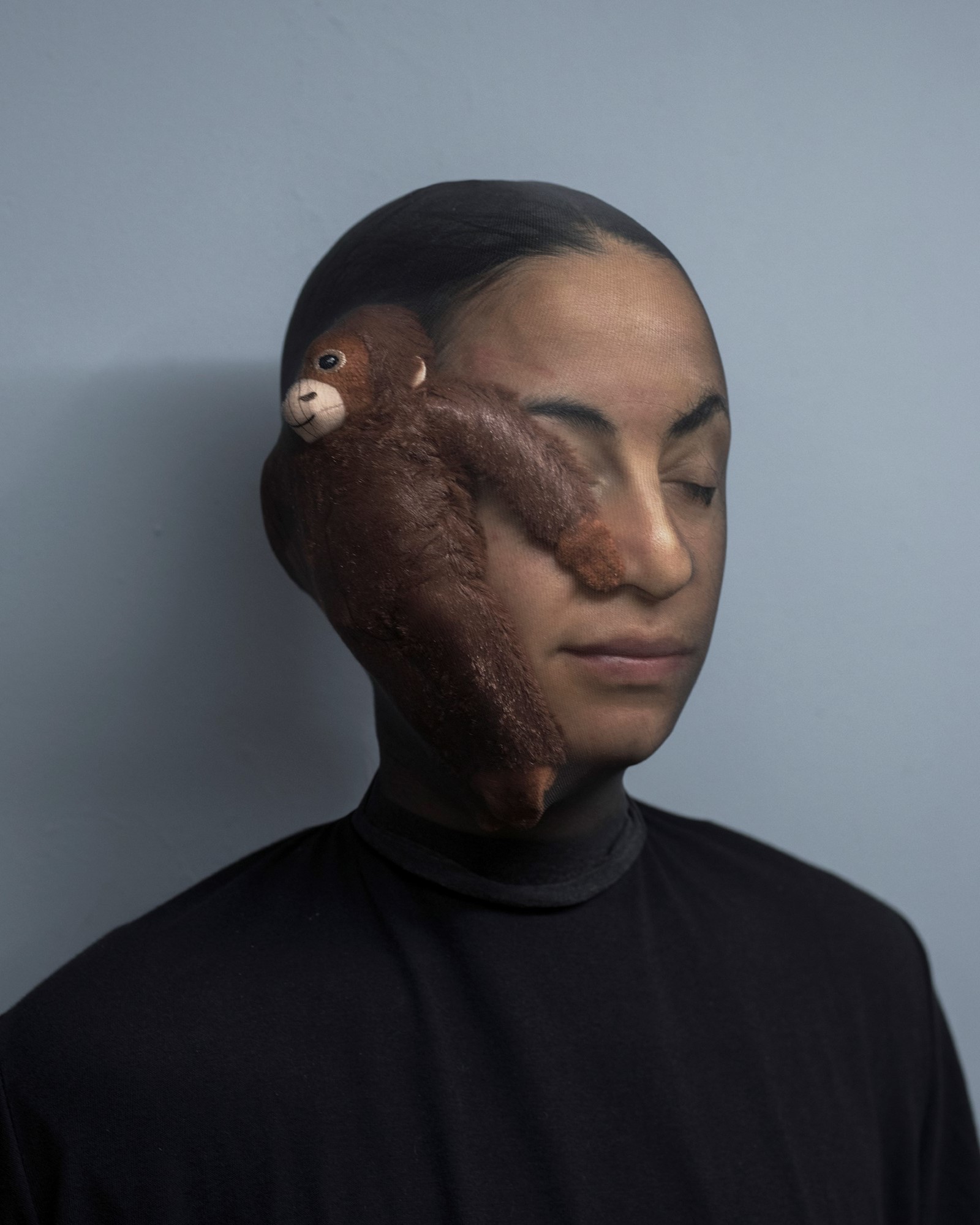
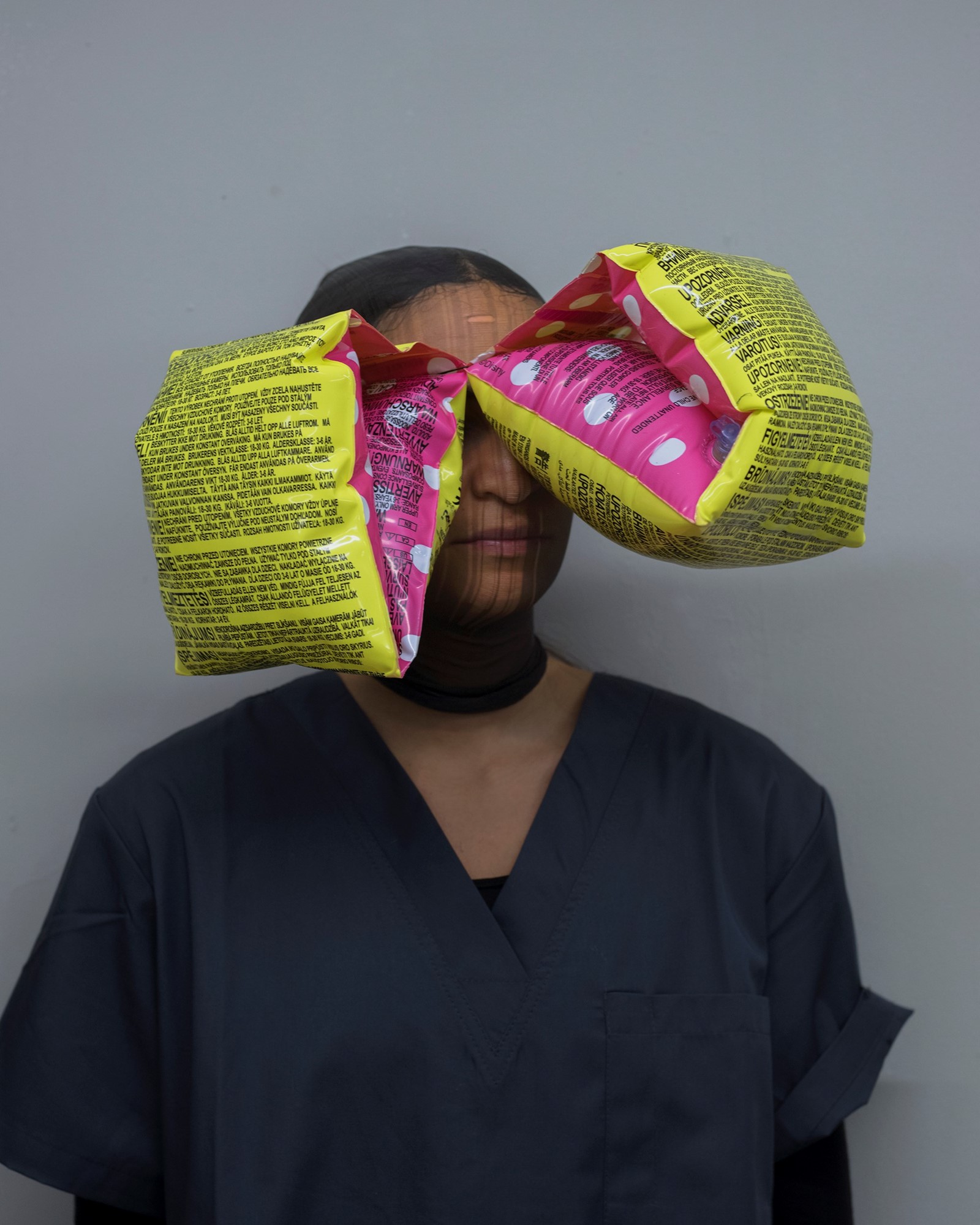
“[I am exploring] the idea of what we value and how things are disposable and how we value convenience. Throwing stuff away is easy. It’s like soft toys, we love them but people routinely separate them from the materials from which they are made.
“I had been researching and collecting materials for a few years – not specifically with this idea in mind but when I began to put the pieces together I drew on all the stuff I had collected. I got access to a couple of local waste management and recycling companies and took some photos but my main interest was the process. I saw mountains of domestic waste. I began to save a lot of the packaging from food I had bought. Every trip to the supermarket was an opportunity to find new content. I spent some weeks putting some ideas together – I started shooting stills of the objects. Then did the portraits.”
“I’m interested in representation and identity. I suppose all my work deals with the idea of identity and how our environment affects us, both physically and mentally. All the images deal with the idea of physical and psychological memory mechanisms. The difference with this series is that I am using a single sitter and working with the idea that only content drives the perception of identity – not the intrinsic nature of a person. Field Test addresses the unseen, a reality that is covert. It addresses a kind of collective trauma and anxiety. Salvage is solely about portraiture, and the narrative about how content informs us.”
Salvage by Jackie Nickerson is published by Kerber, and is out now.
